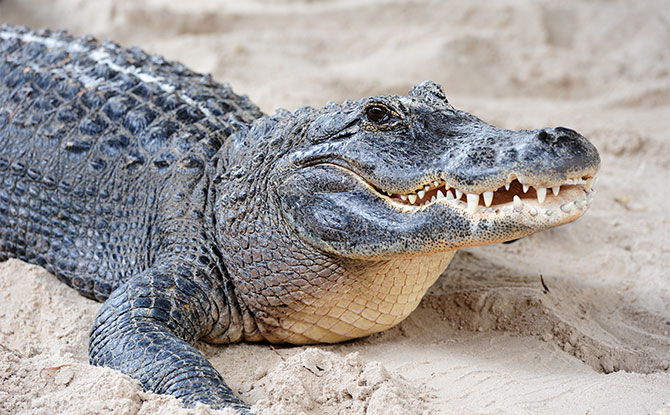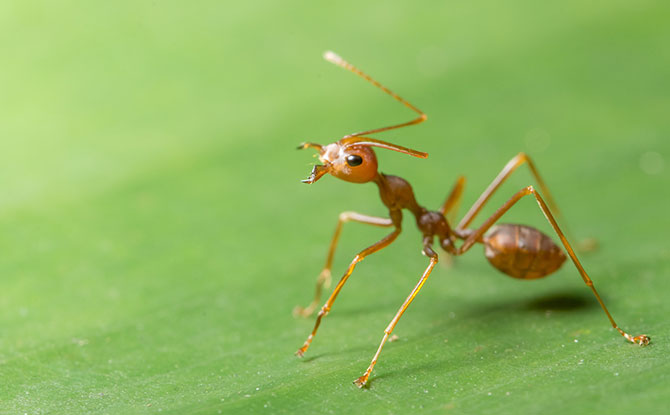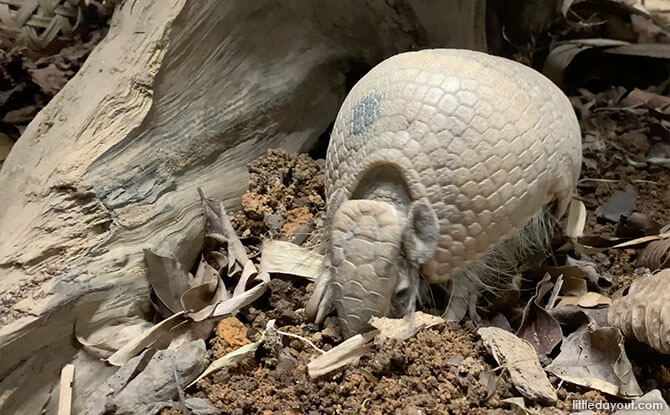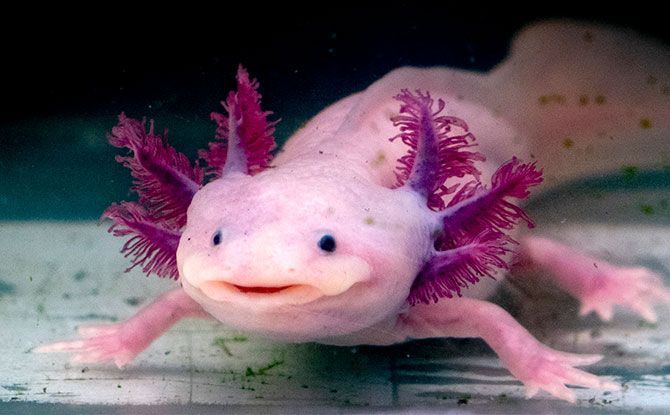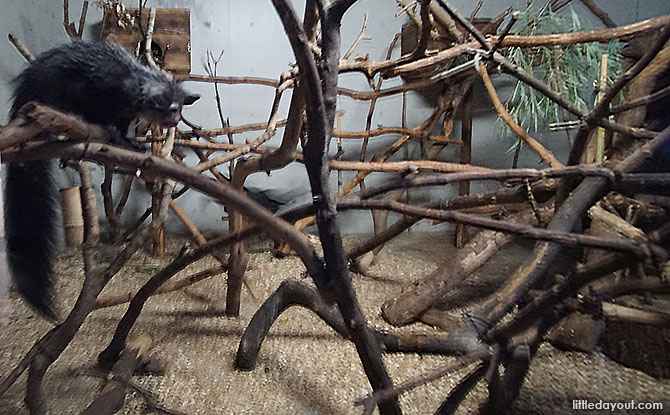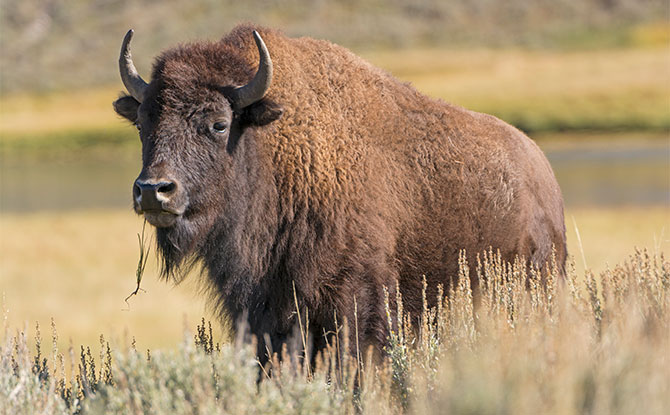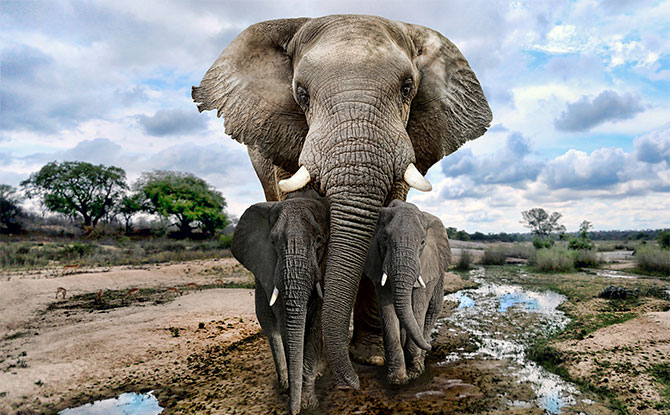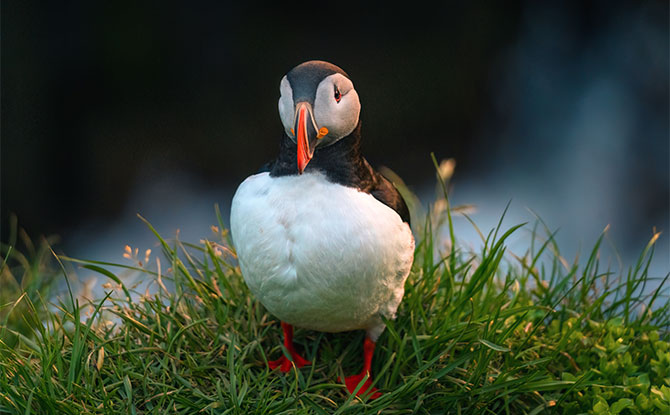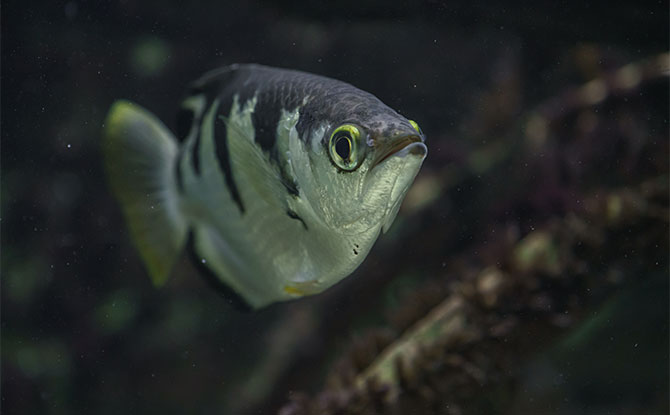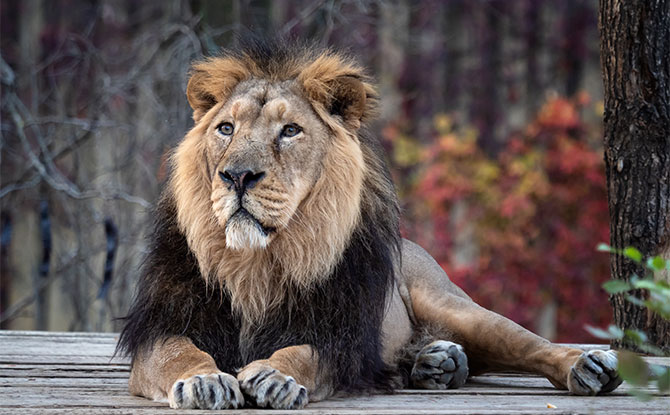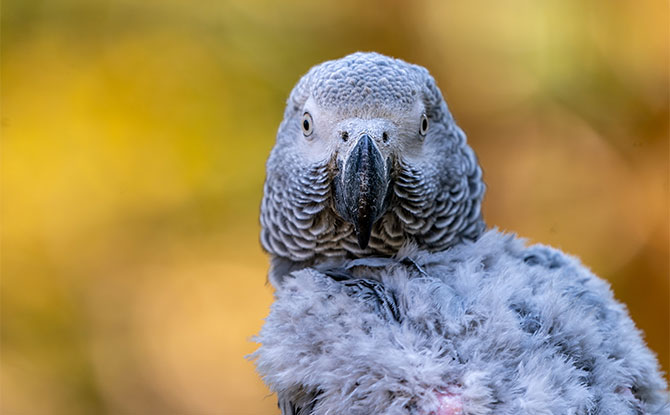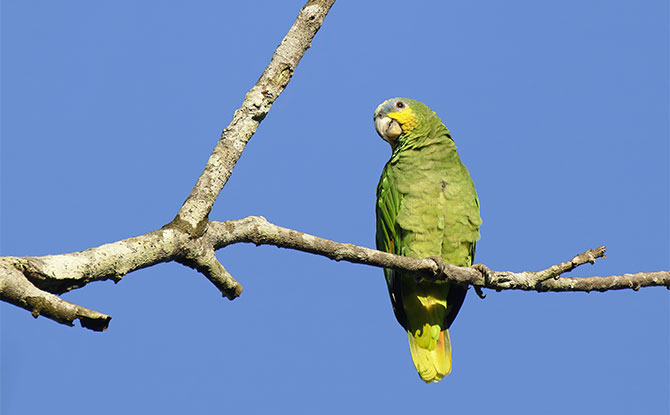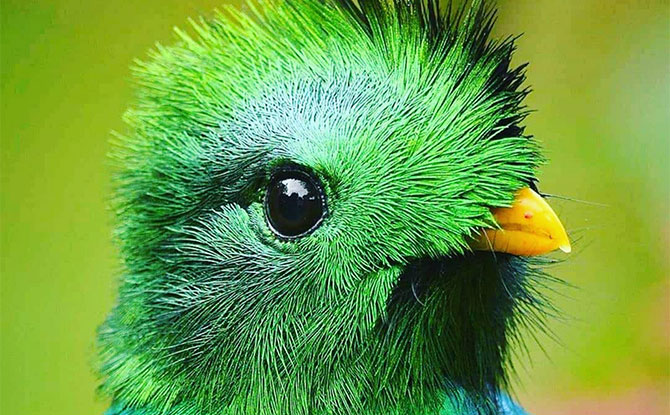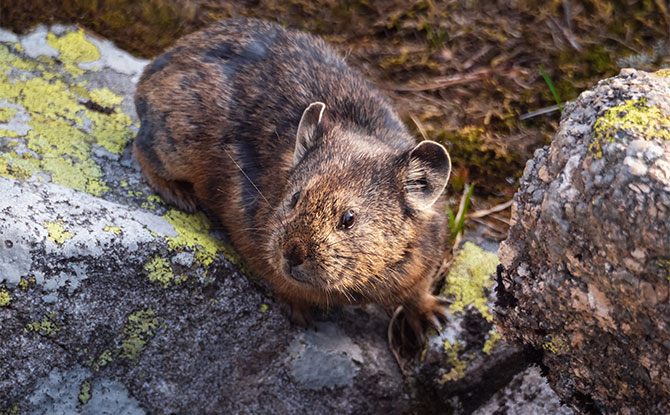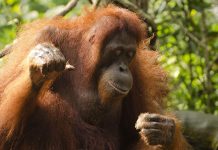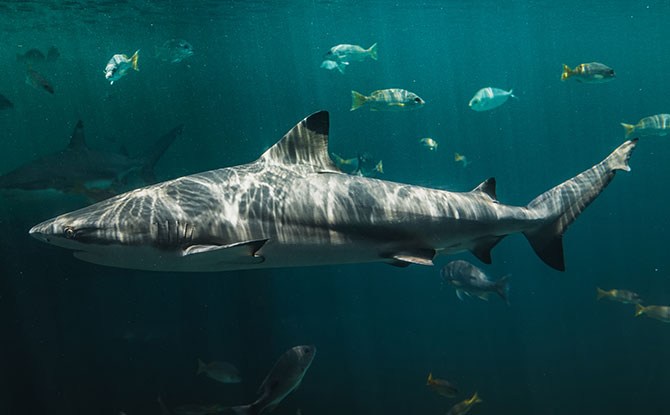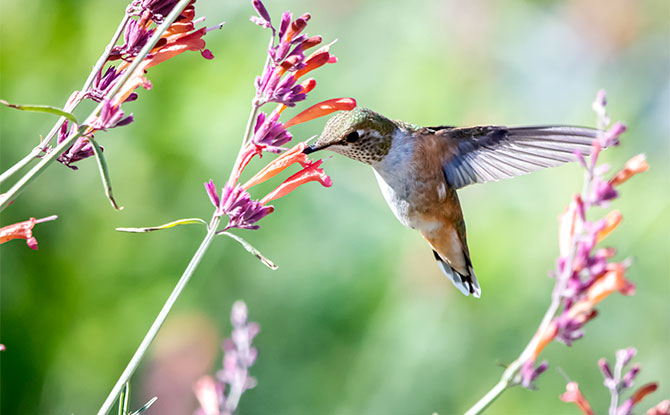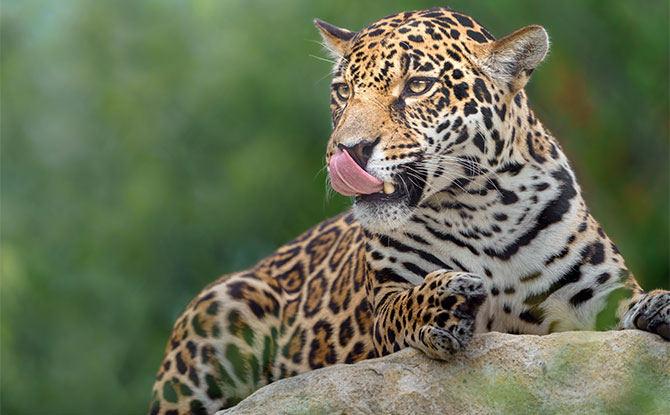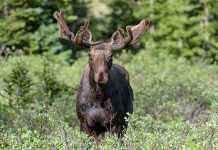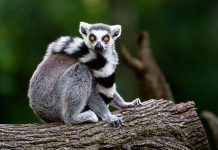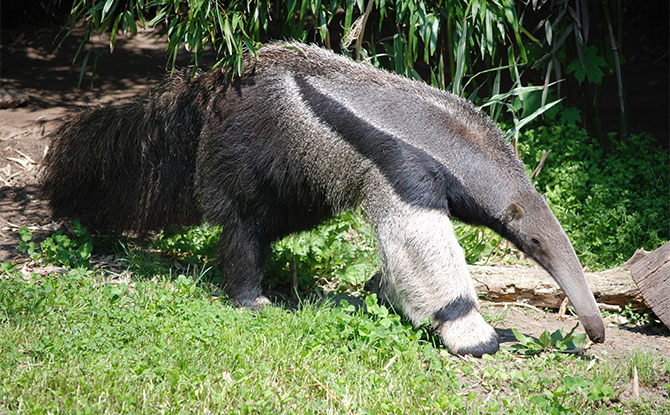
Welcome to our amazing list of animals that all have names starting with the letter A. From Aardvarks to Amazon Parrots, we have gathered fascinating information about these creatures and their unique characteristics. Whether you’re a wildlife enthusiast or just curious about the animal kingdom, this comprehensive list will introduce you to a diverse range of animals that start with the letter A.
26 Animals Starting With A
Did you know that the Aardvark is a nocturnal mammal native to Africa? Or that the Amazon Parrot is known for its vibrant plumage and exceptional vocal abilities? These are just a few examples of the fascinating animals you’ll discover in this list.
Exploring animals that begin with A is not only informative but also a fun way to expand your knowledge of the natural world. So, join us on this exciting journey as we dive into the captivating world of animals starting with A.
Antelope
DINO-TASTIC EXHIBITION: Meet a 40m Long Dino Face-to-Face
GIVEAWAY FOR ENEWSLETTER SUBSCRIBERS: LEGO NINJAGO SET
REGISTER EARLY AND SAVE UP TO $400: English Classes for N1 to Secondary
Antelopes are a fascinating group of mammals known for their slender bodies, long legs, and impressive horns. These graceful creatures can be found in various habitats across the world, from the savannas of Africa to the grasslands of North America.
There are numerous types of antelopes, each with its own unique characteristics and adaptations. Some well-known species include the Impala, Springbok, and Gazelle. These antelopes have evolved different physical attributes and behaviors to help them thrive in their respective environments.
One of the most remarkable features of antelopes is their incredible speed. These animals are built for agility and can reach speeds of up to 60 miles per hour. This incredible speed helps them evade predators and cover large distances in search of food and water.
In addition to their impressive speed, antelopes are also known for their ability to leap high distances. They can clear obstacles and bound effortlessly across the landscape, making them well-adapted to their often challenging habitats.
Antelopes play a vital role in their ecosystems as herbivores, grazing on grasses and vegetation. Their feeding habits help to control plant growth and shape the landscape around them.
With their graceful movements and striking appearance, antelopes are truly remarkable animals. Whether roaming the African plains or the American prairies, these creatures captivate us with their beauty and inspire us to appreciate the wonders of the natural world.
Alligator
The alligator is a fascinating reptile that is known for its powerful jaws and scaly skin. One of the most well-known species of alligators is the American alligator. These ancient creatures can be found in various habitats, including swamps, marshes, rivers, and lakes in the southeastern United States.
Alligators are carnivorous and their diet mainly consists of fish, turtles, birds, and mammals, which they capture with their strong jaws. They are apex predators in their ecosystems and play a crucial role in controlling the populations of their prey species.
The alligator has unique adaptations that allow it to thrive in its habitat. Their scaly skin provides protection and helps them regulate their body temperature. They have excellent eyesight and hearing, allowing them to detect prey and potential threats. Alligators are also known for their powerful tails, which they use for swimming and navigating through the water.
These impressive reptiles have been around for millions of years and have survived various environmental changes. However, habitat loss and hunting have posed threats to their populations. Efforts are being made to conserve and protect the alligator and its habitat to ensure their survival for future generations to admire and appreciate.
Ant
Ants may be small in size, but they are incredibly mighty and possess remarkable characteristics that make them one of the most intriguing creatures on Earth.
Ants are known for their intricate social structures and highly organized colonies. Within an ant colony, there are different types of ants, each with its specific role and responsibilities. The workers are responsible for tasks such as foraging for food and building and maintaining the nest. The soldiers defend the colony from potential threats. And the queens are the reproductive members of the colony, ensuring the continuation of the ant population.
Ants exhibit fascinating behaviors, such as their remarkable ability to communicate through chemical signals known as pheromones. These chemicals are used to leave trails, mark territory, and alert other ants to danger or the presence of food.
In addition to their social structures and behaviors, ants also possess impressive feats of strength. Despite their small size, ants can carry objects many times their own weight. This strength is attributed to their powerful jaws and well-coordinated teamwork.
There are numerous types of ants found across the globe, with each species having its unique characteristics and adaptations. Some examples include the leaf-cutter ants, known for their habit of cutting and carrying leaves back to their nest, and the harvester ants, which collect seeds as their primary food source.
Overall, exploring the world of ants provides us with valuable insights into the wonders of nature, the complexity of social structures, and the importance of cooperation and teamwork. Through intriguing anecdotes and scientific insights, we will gain a deeper appreciation for these industrious insects and their remarkable ability to work together for the benefit of their colony.
Anteater
The anteater, with its distinct long snout and bushy tail, embodies a unique set of characteristics that make it a marvel of nature. Its most prominent feature is its elongated snout, equipped with a specialized tongue that can extend up to two feet, ideal for lapping up ants and termites—the anteater’s primary diet.
The anteater’s coarse fur, often marked with a striking pattern, serves as both protection and camouflage in their forest habitats. Despite their seemingly cumbersome appearance, anteaters are surprisingly agile, capable of swiftly maneuvering through dense vegetation in search of their insect prey.
Known for their solitary nature, anteaters are typically shy and reserved, preferring to avoid confrontation whenever possible. However, when threatened, they can display remarkable defensive abilities, relying on their powerful claws and formidable size to deter potential predators.
If you are a fan of anteaters, we think that you will appreciate these anteater jokes.
Albatross
The magnificent Albatross is a seabird known for its immense wingspan and impressive long-distance flights. These graceful creatures captivate us with their effortless flight patterns and elaborate courtship displays.
There are several types of albatross, each with its unique features and characteristics. From the Wandering Albatross with its majestic wingspan of up to 11 feet to the Black-browed Albatross known for its striking black markings, each species has its charm.
However, these remarkable birds face numerous challenges in their habitats. Loss of nesting sites and overfishing in their feeding grounds have led to declining populations. Climate change also poses a threat to their existence. It is crucial that we understand and protect these magnificent creatures to ensure their survival in the future.
Armadillo
The Armadillo is a unique mammal known for its distinctive features and fascinating behavior. There are several species of armadillos, but one of the most well-known is the nine-banded armadillo, which is predominantly found in the Americas.
Armadillos are notable for their armored shells, which provide them with protection against predators. Their shells consist of tough, bony plates that cover their back, sides, head, and tail, leaving only their underside exposed. These shells not only shield armadillos from harm but also provide insulation and help them retain moisture in their arid habitats.
The nine-banded armadillo is known for its exceptional burrowing abilities. It uses its strong claws to dig underground burrows, creating intricate tunnel systems where it rests, forages for food, and raises its young. These burrows serve as shelter from predators, extreme weather conditions, and provide a safe space for the armadillo to give birth and care for its offspring.
The armadillo’s diet consists primarily of insects, such as ants, termites, and beetles. With their long snouts and sticky tongues, armadillos are adept at hunting for their preferred prey, which they detect by scent. They also consume some plant matter and occasionally feed on small reptiles, amphibians, and eggs.
Armadillos are adaptable and can be found in a variety of habitats, including forests, grasslands, and deserts. They are most commonly seen in areas with loose soil, which makes burrowing easier. However, they are highly adaptable and can also survive in urban environments.
In conclusion, the armadillo is a fascinating creature with its unique features, burrowing abilities, and specialized diet. Its adaptable nature allows it to thrive in various habitats, making it an important part of the ecosystem. By understanding and appreciating these remarkable mammals, we can contribute to their conservation and ensure their continued presence in the natural world.
Anaconda
The anaconda is a magnificent and formidable snake species that captivates the imagination. In particular, we will focus on the green anaconda, which holds the title of being the largest snake species in the world.
The green anaconda is native to the lush habitats of the Amazon rainforest and other tropical regions in South America. Its preferred habitat includes swamps, marshes, and slow-moving bodies of water, where it can expertly blend in with its surroundings. This remarkable snake has adapted to its environment with incredible efficiency, allowing it to thrive in these challenging conditions.
The anaconda’s diet primarily consists of aquatic prey, such as fish, amphibians, and even small mammals. However, these snakes are known for their ability to ambush and overpower larger prey, including caimans, deer, and capybaras. Their astounding strength combined with their unique constricting technique allows them to subdue and eventually consume animals much larger than themselves.
One of the most intriguing aspects of the anaconda’s life cycle is its reproduction. Unlike many other snake species, anacondas give live birth rather than laying eggs. Females can give birth to dozens of offspring, which are already fully formed and capable of independent survival. This reproductive strategy contributes to the anaconda’s success as a top predator in the ecosystem.
The anaconda plays a vital role in maintaining the balance of its habitat. As a top predator, it helps regulate populations of prey species and influences the structure of the food web. Additionally, the anaconda’s presence in its habitat indicates the overall health and biodiversity of the ecosystem.
Overall, the anaconda is a remarkable creature that exemplifies the diversity and adaptability of the animal kingdom. Its sheer size, strength, and unique hunting strategies make it a truly awe-inspiring apex predator. Through further research and conservation efforts, we can ensure the survival of this magnificent species and continue to learn from its remarkable existence in our natural world.
Aardvark
The Aardvark is a unique mammal that is known for its distinctive appearance and specialized diet. Let’s explore the intriguing life of the Aardvark and gain a deeper understanding of its important ecological role.
The Aardvark is known for its burrowing lifestyle, using its strong claws to dig extensive networks of tunnels. These burrows serve as shelter from predators and provide a safe place for the Aardvark to rest during the day. It’s fascinating to see how this creature has adapted to its subterranean lifestyle.
As a nocturnal animal, the Aardvark is most active at night, venturing out of its burrow in search of food. An impressive sense of smell helps it locate its favorite meal: ants and termites. The Aardvark’s long, sticky tongue is perfectly designed for gathering these tiny creatures, making them an essential part of its diet.
With its large, tubular ears and long snout, the Aardvark has evolved specialized adaptations for detecting its prey underground. Its sense of smell is so acute that it can detect the vibrations made by an insect moving just a few inches below the surface.
The Aardvark plays a crucial role in its ecosystem by controlling ant and termite populations. Its feeding habits help to regulate these insects’ numbers and prevent them from causing extensive damage to the environment. Additionally, the burrows the Aardvark creates can serve as shelter for other animals, providing them with protection and a safe place to raise their young.
Overall, the Aardvark is an extraordinary creature that showcases the wonders of nature’s adaptations. Its unique appearance, specialized diet, and important ecological role make it a fascinating species to study and appreciate.
Arctic Fox
The frozen tundra of the Arctic is home to the resilient and adorable Arctic Fox. This remarkable species has developed specialized adaptations that allow it to survive in one of the harshest environments on Earth.
One of the Arctic Fox’s most important adaptations is its thick fur, which provides insulation against the extreme cold. This luxuriously soft coat changes color with the seasons, camouflaging the fox in the snowy landscape during the winter months.
The Arctic Fox also has small ears and a compact body to minimize heat loss. Additionally, its furry feet act as natural snowshoes, allowing the fox to move easily across the icy terrain.
When it comes to hunting, the Arctic Fox has developed unique techniques to find food in its harsh habitat. It has a keen sense of hearing and can detect the movements of small prey beneath the snow. The fox also relies on its acute sense of smell to locate burrows of lemmings and other small rodents.
Reproduction is another fascinating aspect of the Arctic Fox’s life. These foxes have a monogamous mating system, with pairs forming strong bonds that last for life. The female fox builds an underground den where she gives birth to her pups, usually in the spring. The fluffy and playful fox cubs are raised by both parents, who work together to provide food and protection.
Axolotl
The Axolotl is a unique amphibian native to Mexico. The axolotl is known for its unusual appearance, with feathery gills and a perpetually juvenile form.
One of the most intriguing facts about the axolotl is its ability to regenerate lost body parts, including limbs, spinal cord, and even parts of its heart and brain. This remarkable regenerative ability has made the axolotl a subject of great interest in scientific research, particularly in the fields of regeneration and developmental biology. Researchers study the axolotl to gain insights into the mechanisms behind tissue regeneration and the potential applications for human medicine.
The axolotl is often referred to as the “Mexican walking fish,” although it is not actually a fish, but an amphibian. It spends its entire life in water and has the ability to breathe through its feathery gills. It inhabits the Xochimilco lake complex and a few other lakes and canals in Mexico City, known as the Valley of Mexico.
Unfortunately, the axolotl habitat is under threat due to pollution, habitat destruction, and the introduction of non-native species. As a result, the wild population of axolotls has significantly declined in recent years, leading to their classification as critically endangered on the IUCN Red List of Threatened Species.
Aye-aye
The Aye-aye is a remarkable primate found on the island of Madagascar. With its long, bony fingers and large ears, the Aye-aye possesses distinct physical characteristics that set it apart from other primates. But there’s more to the Aye-aye than meets the eye.
The Aye-aye’s habitat is primarily the dense rainforests of Madagascar, where it can be found in the upper canopy. This elusive primate is known for its solitary and nocturnal behavior, making it a challenge to study and observe in the wild. Its solitary nature allows the Aye-aye to navigate its habitat undisturbed and focus on its specialized foraging techniques.
One of the most fascinating aspects of the Aye-aye is its unique feeding behavior. Using its elongated fingers, the Aye-aye taps on tree branches and listens for the sound of insects moving beneath the bark. Once it detects a potential meal, it gnaws through the wood and uses its slender fingers to extract the insects. This specialized foraging technique is a testament to the Aye-aye’s remarkable adaptability.
Despite its unique characteristics and adaptive behavior, the Aye-aye faces numerous challenges, including habitat loss and human disturbance. Conservation efforts are underway to protect its fragile habitat and ensure the long-term survival of this enigmatic primate.
Did you know that you can see the aye-aye at Ueno Zoo in Japan?
American Bison
The American Bison holds a significant place in American history and culture. These majestic creatures have long been a symbol of the American West, representing the untamed wilderness and the resilience of nature.
The American Bison is characterized by its large size, powerful build, and imposing horns. With a shoulder height of up to six feet and a weight of over a ton, they are truly awe-inspiring animals. Their shaggy coats, consisting of long, thick hair, provide insulation during harsh winters and protection against predators.
The bison’s habitat ranges from grasslands to forests, but they are most commonly found in the Great Plains of North America. These vast grasslands provide an ideal environment for grazing, which is the bison’s primary food source. They are herbivores, feeding on grasses and sedges, and their grazing behavior plays a vital role in shaping the landscapes they inhabit.
Bison live in herds, moving together in search of food and water. These herds are organized into smaller groups, led by dominant males known as bulls. The social structure of bison herds is complex, with distinct roles for males, females, and calves. This social organization allows for efficient communication and coordination within the herd.
Although the American Bison faced near extinction in the late 19th century due to overhunting, conservation efforts have helped to restore their populations. Today, they are considered a conservation success story, with many herds thriving in protected areas and national parks.
Encountering a wild bison in its natural habitat is a truly memorable experience. Their powerful presence and connection to the land serve as a reminder of the rich biodiversity of North America and the importance of preserving these iconic species for future generations.
African Elephant
The African Elephant is one of the largest land animals on Earth. This majestic creature is divided into two species: the African savannah elephant and the African forest elephant.
The African savannah elephant, also known as the African bush elephant, is the larger of the two species. It roams the grasslands and savannahs of Africa, with a population spread across many countries on the continent. These elephants have long tusks and large ears that help them stay cool in the hot African climate.
The African forest elephant, on the other hand, is smaller in size and exclusively found in the dense forests of Central and West Africa. These elephants have straighter tusks and are known for their shy and secretive nature. They play a vital role in maintaining the balance of the forest ecosystem.
Both species of African elephants exhibit complex social structures and live in cohesive family groups called herds. These herds are usually led by a matriarch, an experienced female who guides the group and makes important decisions.
African elephants are herbivores and spend a significant amount of their day feeding on grasses, leaves, bark, and fruits. They have a large appetite due to their massive size and can consume hundreds of pounds of vegetation each day.
These remarkable creatures are considered keystone species in their respective ecosystems. They shape their habitats by creating clearings and dispersing seeds through their waste, thus influencing the biodiversity of the surrounding areas.
Unfortunately, African elephants face numerous conservation challenges, including habitat loss, poaching for ivory, and human-wildlife conflict. Efforts are underway to protect these magnificent animals and ensure their survival for future generations.
Want to learn more? Here are some interesting elephant facts for kids or you may also enjoy these funny elephant jokes.
Atlantic Puffin
The Atlantic Puffin is a delightful seabird that captures the hearts of bird enthusiasts with its charming appearance and engaging behavior. These colorful birds are known for their distinctive features, including their brightly-colored beaks and striking markings.
One of the remarkable aspects of the Atlantic Puffin is its habitat. These birds can be found along the coasts of the North Atlantic Ocean, nesting in colonies on coastal cliffs and islands. They often choose remote and inaccessible locations to establish their breeding grounds, ensuring the safety of their offspring from predators.
The Atlantic Puffin’s diet primarily consists of fish, which they catch by diving and swimming underwater. Their ability to navigate the water with precision and agility is truly impressive. These skilled hunters can dive up to 60 meters (200 feet) in search of their prey.
During the breeding season, Atlantic Puffins engage in elaborate courtship rituals to attract a mate. They form monogamous pairs and return to the same breeding grounds each year. The nesting behavior of these birds is equally fascinating, as they excavate burrows in the soil or find natural crevices to create their nests.
With their charming appearance and engaging behaviors, Atlantic Puffins have become an icon of coastal regions and a beloved sight for birdwatchers. Their unique adaptations for life at sea and their important role in coastal ecosystems make them a species of great interest and conservation concern.
Archerfish
The Archerfish is an extraordinary fish with an impressive hunting technique. The Archerfish is known for its ability to shoot down insects from overhanging vegetation by spitting a jet of water with remarkable accuracy.
One of the most intriguing aspects of the Archerfish is its hunting technique. When it spots an insect perched on a branch or leaf above the water, it takes aim and spits a jet of water with such precision that it can knock the insect into the water. This unique ability allows the Archerfish to catch its prey in a most extraordinary way.
The Archerfish’s hunting technique is not only remarkable, but it also showcases the fish’s exceptional accuracy and hunting prowess. It is truly a sight to behold as the Archerfish takes aim and spits its watery missile with great precision, ensuring a successful catch.
In addition to its hunting skills, the Archerfish also has unique habitat preferences. It can be found in brackish and freshwater environments, such as mangrove swamps and estuaries, where it can rely on its hunting technique to catch its prey. These habitats provide the Archerfish with the vegetation and insects it needs to thrive.
As for its diet, the Archerfish mainly feeds on insects and other small aquatic creatures. Its ability to catch its prey with such accuracy and efficiency allows it to obtain the nutrition it needs to survive and thrive in its habitat.
Overall, the Archerfish is a remarkable fish that exhibits an exceptional hunting technique and thrives in its chosen habitat. Its ability to shoot down insects with water precision is a testament to nature’s ingenuity and the adaptability of aquatic life. By gaining a deeper understanding of the Archerfish and its impressive hunting skills, we can appreciate the wonders of the natural world even more.
Anemone
Anemones are marine animals that resemble flowers. Anemones are found in various marine environments, including coral reefs, rocky shores, and sandy bottoms. These mesmerizing creatures come in a wide range of colors, from vibrant oranges and purples to delicate pastels.
Anemones are known for their unique symbiotic relationships with other organisms, such as clownfish. The anemone provides protection for the clownfish, while the clownfish helps the anemone by bringing it food and keeping it clean. This mutually beneficial partnership is a remarkable example of nature’s interconnectedness.
One of the standout features of anemones is their feeding habits. Anemones have specialized cells in their tentacles called cnidocytes, which contain stinging structures called nematocysts. These nematocysts are used to capture prey, such as small fish and shrimp, which the anemone then consumes. It’s fascinating to observe how anemones use their tentacles to bring food to their mouths.
Another intriguing aspect of anemones is their defense mechanisms. When threatened, anemones can retract their tentacles and close up their body, forming a protective barrier. In addition to their physical defenses, anemones also have the ability to regenerate lost parts of their body, allowing them to recover from injuries and predation.
Anemones play a vital role in marine ecosystems. They provide shelter and habitat for many other species, including crabs, shrimp, and small fish. Additionally, anemones contribute to the health of coral reefs by filtering and recycling nutrients.
Through stunning imagery and captivating descriptions, readers will gain a deeper appreciation for these captivating creatures and their vital role in marine ecosystems.
Aardwolf
The Aardwolf is a fascinating small carnivorous mammal that is often mistaken for a hyena. This unique creature has its own distinctive characteristics and important role in its ecosystem.
One of the Aardwolf’s notable features is its specialized diet, which mainly consists of termites. With its long tongue, the Aardwolf can lap up thousands of termites in a single night, making it a highly efficient termite hunter.
The Aardwolf is primarily found in grasslands and savannas, where termites are abundant. Its habitat perfectly suits its specific dietary needs and allows it to thrive in these environments.
In addition to its diet, the Aardwolf has developed unique adaptations for survival. When threatened, it can emit a foul-smelling odor as a defense mechanism, deterring potential predators.
By understanding the Aardwolf’s specialized diet, its habitat preferences, and its unique adaptations, we can gain a deeper appreciation for this elusive creature and the important role it plays in maintaining the balance of its ecosystem.
African Wild Dog
The African Wild Dog, also known as the African Painted Dog, is a highly social and intelligent predator found in sub-Saharan Africa. These dogs are characterized by their eye-catching coat patterns, which vary from individual to individual, making each dog easily distinguishable. They have large rounded ears, well-adapted for hearing the calls of their pack members and potential prey.
One of the most fascinating aspects of African Wild Dog behavior is their pack structure. They live in tightly-knit packs that consist of an alpha pair, subordinate adults, and the pups. Within the pack, there is a strong social bond as they cooperate to hunt, raise young, and defend their territory. Each member has an important role, and their tight teamwork and communication enable them to be highly successful hunters.
When it comes to hunting, African Wild Dogs are known for their unique and effective strategies. They are endurance hunters, capable of running long distances at impressive speeds. Rather than relying on sheer strength, they use their excellent stamina and teamwork to pursue and wear down their prey. They also exhibit a cooperative hunting behavior known as “operative hunting,” where they work together to surround and subdue their target. This hunting technique ensures the success of the entire pack in capturing food.
Despite their remarkable adaptations and hunting skills, African Wild Dogs face significant conservation challenges. Habitat loss, fragmentation, and human conflict threaten their populations, making them an endangered species. Conservation organizations and researchers are working tirelessly to protect these incredible predators and raise awareness of their importance in maintaining healthy ecosystems.
Amazon River Dolphin
The Amazon River Dolphin is also known as the pink river dolphin. The dolphin has a distinct pink coloration and unique adaptations for river life in the Amazon basin. The Amazon River Dolphin, scientifically known as Inia geoffrensis, is a fascinating aquatic mammal that calls the Amazon River and its tributaries home. With its striking pink color and sleek body, the Amazon River Dolphin is a true marvel of nature.
Living in the vast and diverse ecosystem of the Amazon, these dolphins have developed specialized adaptations to navigate through the river’s intricate network of channels and flooded forests. Their long and slender bodies, along with their long snouts and flexible necks, enable them to maneuver through the narrowest of spaces in search of fish, their primary food source.
The Amazon River Dolphin is known for its social behavior, often forming small groups known as pods. Within these pods, the dolphins exhibit complex social structures and engage in cooperative hunting and communication. They are highly intelligent creatures, possessing a keen sense of hearing and echolocation skills that allow them to navigate and locate prey in the murky waters of the Amazon.
Ape
Apes are a group of highly intelligent and closely related primates. There different species of apes, including chimpanzees, orangutans, gorillas, and bonobos, and discover their unique characteristics, social structures, and behaviors.
Apes are known for their remarkable cognitive abilities, which rival those of humans. They are capable of problem-solving, tool-using, and even exhibiting emotions. These incredible creatures share many similarities with humans, both anatomically and behaviorally, making them a subject of great interest and study.
Chimpanzees are known for their complex social structures and their use of tools for various tasks. Orangutans, the “forest people,” are highly intelligent and adapt well to their arboreal habitats. Gorillas, the largest of the apes, exhibit strong family bonds and display power and grace. Bonobos, on the other hand, are known for their peaceful and egalitarian societies.
However, these incredible species face significant conservation challenges in the wild. Habitat loss, deforestation, and poaching are threatening their populations. Efforts are underway to protect and preserve their habitats and raise awareness about the importance of their conservation.
Arctic Hare
The Arctic Hare is a remarkable species that has adapted to thrive in the harsh conditions of the Arctic tundra. With its thick fur, the Arctic Hare is well-equipped to withstand the extreme cold temperatures of its habitat. But that’s not all – this agile creature also has the ability to change color with the seasons, allowing it to blend in with its surroundings and avoid predators.
One of the most notable features of the Arctic Hare is its large hind limbs, which enable it to run at impressive speeds across the tundra. This adaptation is crucial for escaping from predators and finding food in the vast, open landscape.
The Arctic Hare’s habitat consists of the Arctic tundra, a vast and treeless plain characterized by freezing temperatures and a short growing season. Despite these challenging conditions, the Arctic Hare has developed various behavioral adaptations to survive. It burrows in the snow to create warm shelters, known as “forms,” where it can rest and protect itself from the cold.
In terms of diet, the Arctic Hare relies on a variety of plants that are able to grow in the tundra’s harsh environment. It feeds on grasses, mosses, and lichens, utilizing its strong teeth and jaws to efficiently consume its food.
Through its thick fur, swift movements, and resourceful behaviors, the Arctic Hare exemplifies nature’s incredible ability to adapt and thrive in even the harshest of environments. It serves as a testament to the resilience and ingenuity of wildlife in the Arctic region.
Asian Elephant
The Asian Elephant is a majestic species that can be found in various parts of Asia. Known for its cultural significance and ecological role, this magnificent creature possesses unique physical characteristics and behaviors that captivate the imagination of people around the world.
Asian elephants are known for their large size, with males typically weighing between 5,000 and 14,000 pounds. They have a distinctive trunk that serves multiple purposes, such as grasping objects, communicating, and even as a snorkel when swimming. The Asian elephant’s tusks, which are elongated upper incisor teeth, are another defining feature.
In addition to their physical traits, Asian elephants have complex social structures. They live in matriarchal herds, led by a dominant female known as the matriarch. These herds are composed of related females and their calves, creating a strong bond within the group. Male Asian elephants, on the other hand, live a more solitary or nomadic lifestyle.
Asian elephants display a range of fascinating behaviors that highlight their intelligence and adaptability. For example, they are skilled at using their trunks to manipulate objects and can even paint beautiful artworks with guidance from humans. They are also known to engage in cooperative behaviors, such as working together to accomplish tasks or providing care for injured or sick herd members.
Asiatic Lion
Located in the Gir forest of India, the Asiatic Lion is a truly majestic creature that holds great significance. This critically endangered species is known for its regal appearance and powerful presence. Sporting a distinctive mane and a strong physique, the Asiatic Lion is a symbol of royalty and power.
The Gir forest serves as the lion’s habitat, providing them with a vast and diverse ecosystem to thrive in. Within prides, the social structure of these lions is well-defined, with males establishing their dominance and females working together to raise their young.
Conservation efforts have been put into place to protect the Asiatic Lion and combat the challenges it faces. Habitat fragmentation and human encroachment pose significant threats to the dwindling population of these magnificent creatures. It is crucial to preserve their habitat and raise awareness about the importance of their conservation.
Through intriguing anecdotes and scientific insights, readers can gain a deeper appreciation for the Asiatic Lion and its role in the wild. By supporting conservation initiatives, we can ensure the survival of this iconic species for future generations to admire.
Want to learn more? Read some interesting lion facts for kids.
Arabian Horse
The Arabian Horse is an elegant and beloved breed that is highly esteemed for its beauty, intelligence, and endurance. Known for its distinct physical characteristics, such as its dished face, high tail carriage, and finely chiseled bone structure, the Arabian Horse is truly a sight to behold. This breed has a rich history dating back thousands of years and holds great significance in Middle Eastern cultures.
The Arabian Horse’s endurance and agility make it an ideal choice for various disciplines, including endurance riding, dressage, and show jumping. Its intelligence and willingness to please also make it a popular choice for equestrians of all levels. With its regal presence and graceful movements, the Arabian Horse continues to captivate enthusiasts around the world.
Throughout history, Arabian Horses have been treasured and revered by ancient civilizations, Bedouin tribes, and royalty alike. Their reputation for loyalty, stamina, and adaptability has made them invaluable companions in times of war as well as trusted partners in exploration and trade. Today, they are cherished not only for their beauty and performance but also for their role in preserving the breed’s ancient bloodlines and heritage.
Whether performing in the show ring or carrying riders across vast deserts, the Arabian Horse embodies strength, grace, and a deep connection to human history. Its enduring legacy as one of the oldest and most treasured horse breeds in the world continues to inspire awe and admiration among horse enthusiasts and cultural aficionados alike.
Want to learn more about horses? Read these interesting horse facts for kids.
African Grey Parrot
The African Grey Parrot is a highly intelligent and charismatic bird species native to the rainforests of West and Central Africa. Known for its remarkable ability to mimic human speech, the African Grey Parrot has become a popular pet among bird enthusiasts.
But it’s not just their ability to mimic human speech that makes these parrots special. African Grey Parrots are incredibly intelligent creatures, with cognitive skills that have been compared to those of young children. They have the ability to learn and understand complex concepts, solve problems, and even use tools.
In their natural habitat, African Grey Parrots can be found in the dense forests of Africa, where they forage for fruits, nuts, seeds, and vegetation. They typically live in small flocks and have a complex social structure, forming strong bonds with their flock mates.
Unfortunately, African Grey Parrots are facing numerous challenges in the wild. Habitat loss due to deforestation and the illegal pet trade have taken a toll on their populations. These factors have led to the decline of this species, and they are now listed as endangered.
It is important to raise awareness about the conservation of African Grey Parrots and their natural habitats. Efforts are being made to protect their populations and combat illegal trade. By supporting conservation organizations and promoting sustainable practices, we can help ensure the survival of these magnificent birds for future generations to enjoy.
Amazon Parrot
The vibrant and charming Amazon Parrot is native to Central and South America. With their beautiful plumage and playful personalities, Amazon Parrots are truly captivating creatures. There are numerous species of Amazon Parrots, each with its own unique characteristics and colors, adding to the diversity and allure of these birds.
Amazon Parrots are found in a range of habitats, from lush tropical rainforests to drier savannas. Their adaptability allows them to thrive in different environments, showcasing the incredible diversity of their natural range. It’s no wonder they are often associated with the lush beauty of the Amazon rainforest.
When it comes to diet, Amazon Parrots have a varied menu. They enjoy fruits, berries, seeds, nuts, and even flowers. Their sharp beaks allow them to crack open nuts and seeds with ease. As social birds, Amazon Parrots are known for their ability to mimic sounds and phrases, making them conversational and entertaining companions.
We hope that you’ve found list of animals that start with A both interesting and informative. If you have enjoyed this list, you may also enjoy this on on amazing animals that start with B.






